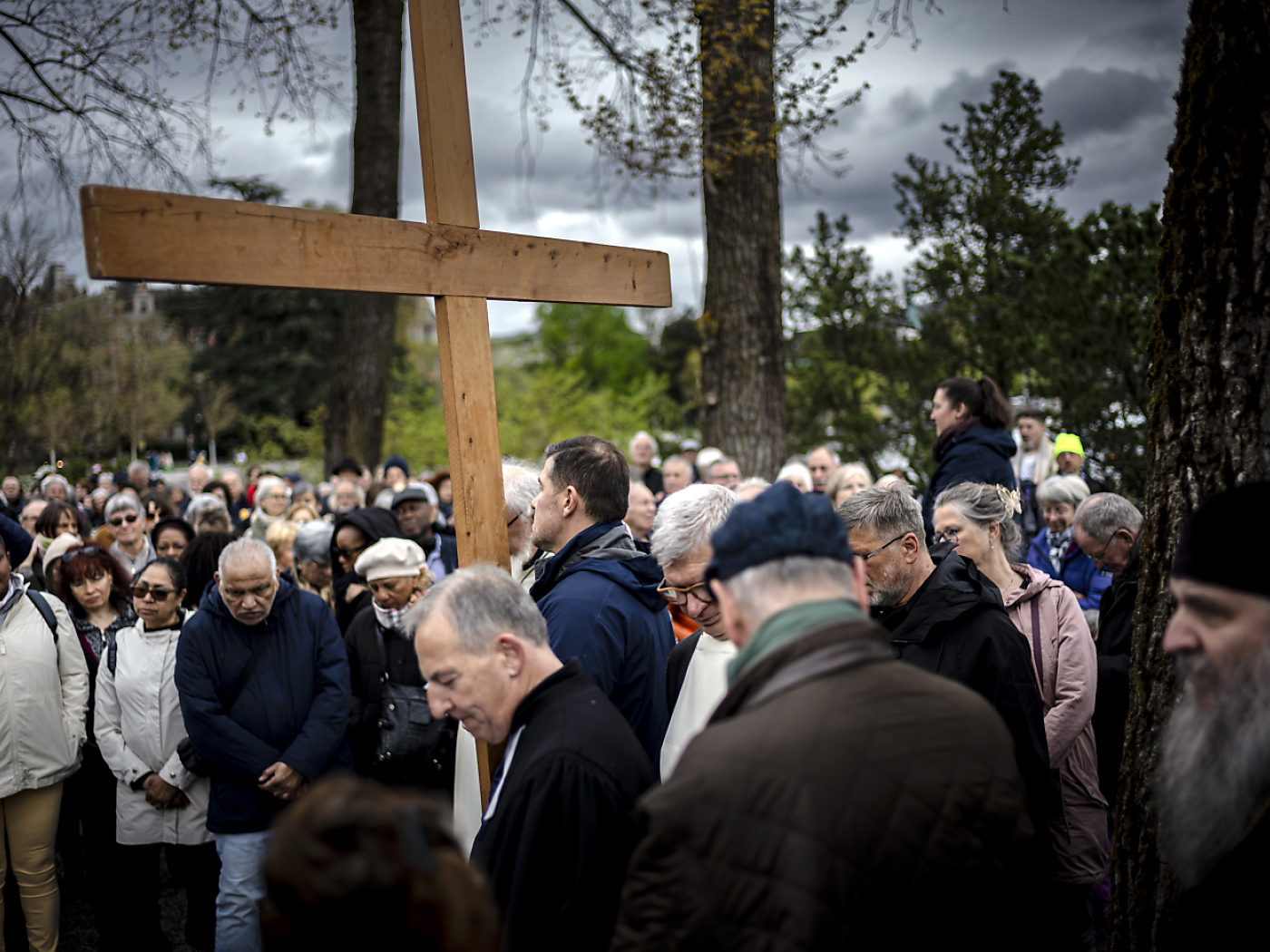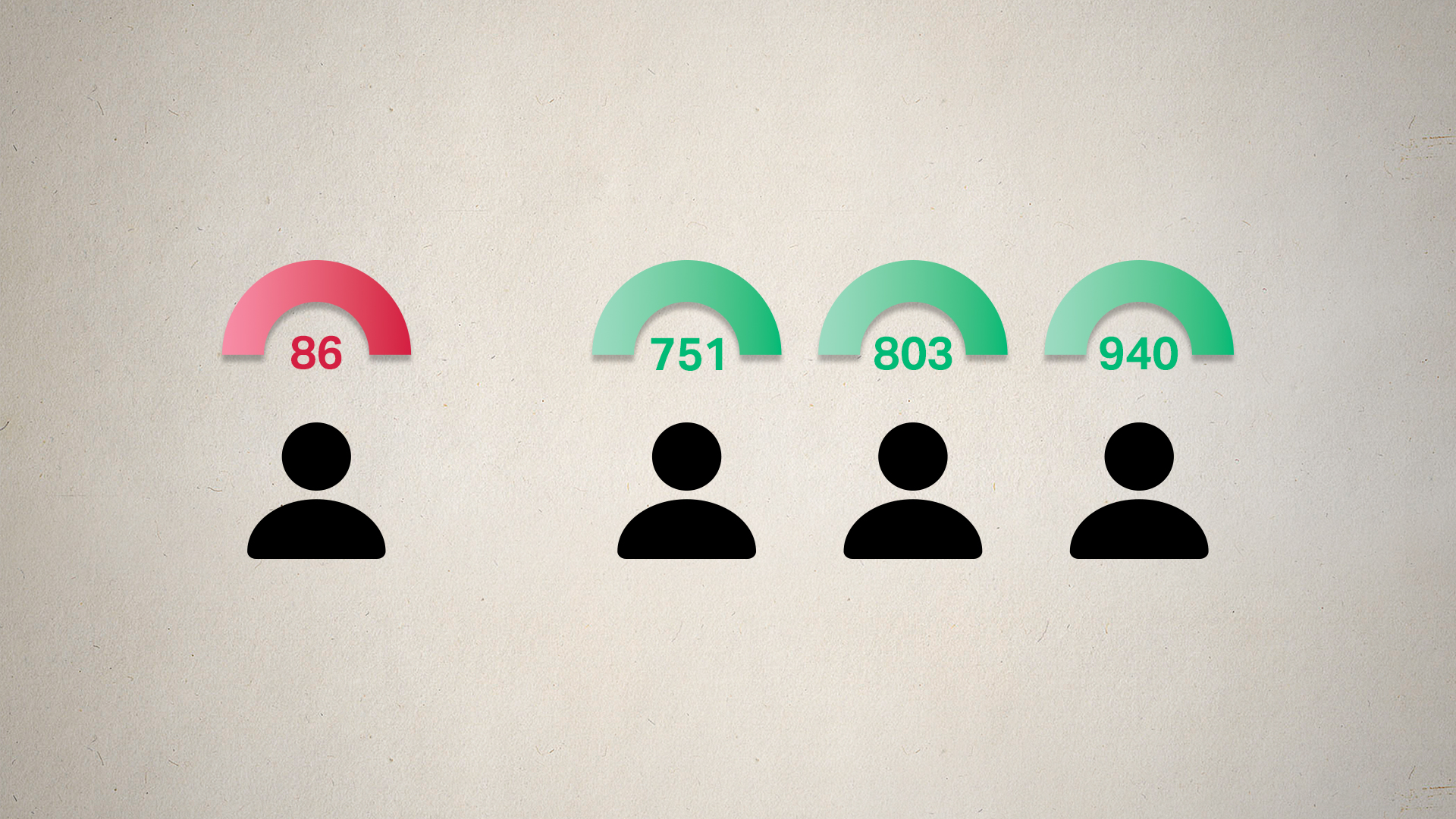
Handful of Swiss Easter processions take place after inclement weather

Traditional Good Friday processions continue to take place in some municipalities in Switzerland. In Romont, canton Fribourg, for example, the "Pleureuses" marched through the streets.
In Mendrisio in the southern canton of Ticino, however, the weather prevented the procession from taking place.
+Get the most important news from Switzerland in your inbox
Zurich organised an ecumenical Way of the Cross. There, several hundred believers walked behind a wooden cross for the 29th time on Good Friday. The participants took it in turns to shoulder the cross. The procession led to several stations and was organised as an ecumenical service in the streets of Zurich.
Two hours after it began at the Christian Catholic Augustinian Church, the procession ended at the Dreikönigen church in Zurich’s Enge neighbourhood.
Wailing women march through Romont
In Romont, the “Pleureuses” or mourners, continued a custom that dates back to the 14th century. In a Passion procession as a penitential exercise, they commemorated the suffering of Christ. Behind a young woman dressed as Mary were 14 mourners clad in black.

More
Swiss Easter processions gain UNESCO stamp
They carried Jesus’ instruments of torture on cushions: a crown of thorns, a scourge, nails, a hammer, pincers and an image of St Veronica’s shawl. A man with a cross invited people to pray. The procession began at church with the reading of the Passion story.
Cancellation in Mendrisio
In Mendrisio, storms on Maundy Thursday prevented the procession, which has been held since 1798, from taking place. The event normally attracts up to 10,000 people, including many tourists, to the southern Ticino municipality. Around 200 costumed villagers and horses normally take part representing Christ’s walk to Calvary.
+ Traditional Mendrisio procession in pictures
Around 500 children usually participate in a Good Friday procession. It is called “entierro” in Spanish for the burial of Christ. It is more spiritual in orientation than the Maundy Thursday procession and primarily serves to commemorate the death of Jesus Christ. It dates back to the year 1659.
Translated from German with DeepL/gw
How we work
We select the most relevant news for an international audience and use automatic translation tools such as DeepL to translate them into English. An editor then briefly reviews the translation for clarity and accuracy before publication. Providing you with automatically translated news gives us the time to write more in-depth articles. The news stories we select have been written and carefully fact-checked by an external editorial team from news agencies such as Bloomberg or Keystone.
Did you find this explanation helpful? Please fill out this short survey to help us understand your needs by clicking hereExternal link.

In compliance with the JTI standards
More: SWI swissinfo.ch certified by the Journalism Trust Initiative










































You can find an overview of ongoing debates with our journalists here . Please join us!
If you want to start a conversation about a topic raised in this article or want to report factual errors, email us at english@swissinfo.ch.